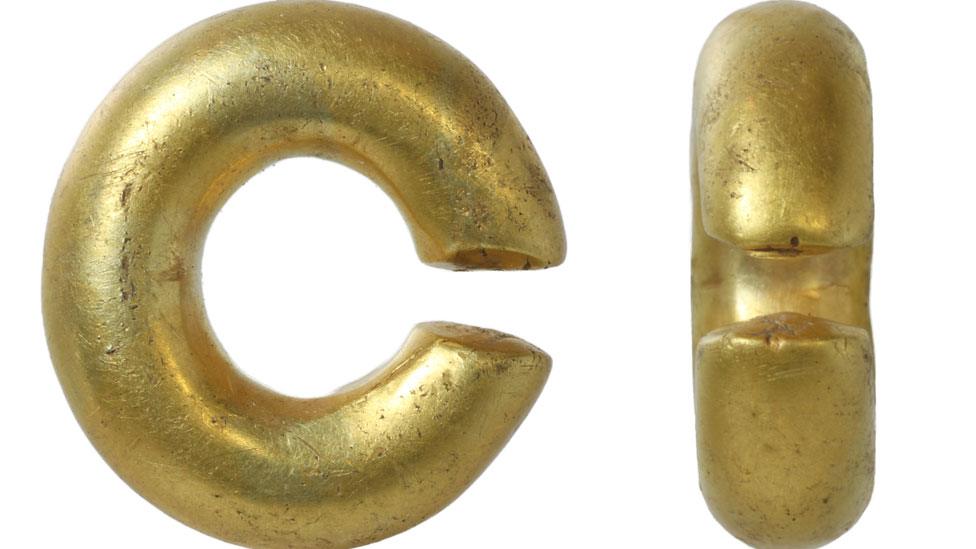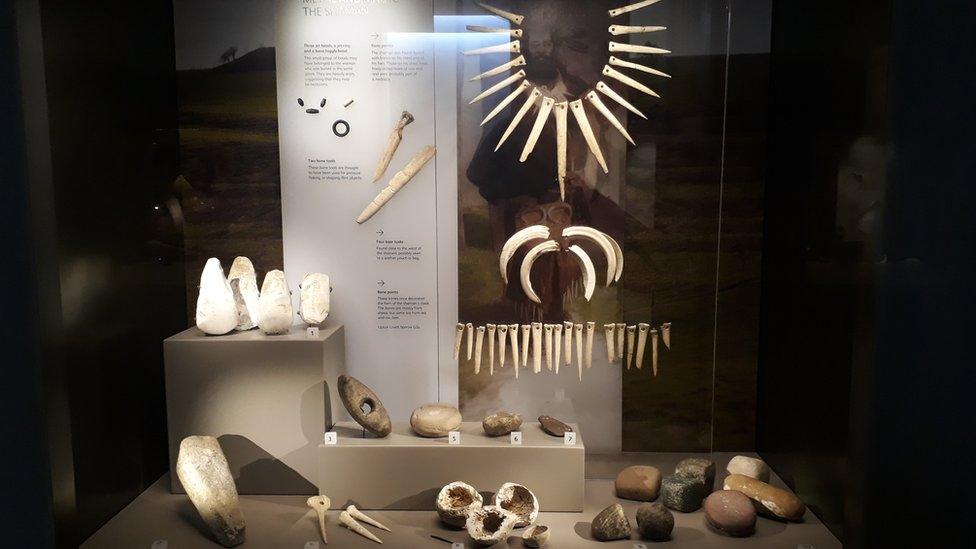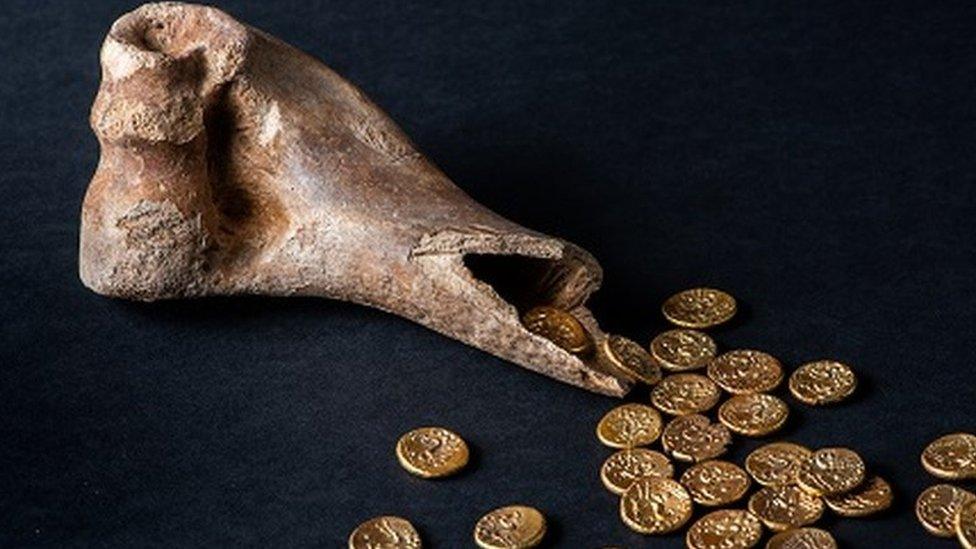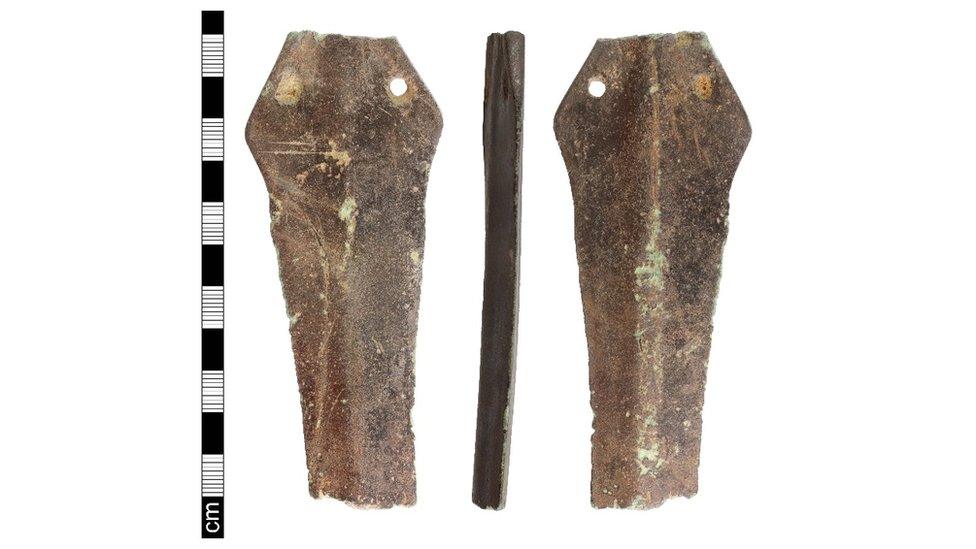Mysterious gold Bronze Age ring found in Norfolk field
- Published

The tiny ring was discovered in September 2022
An "incredibly mysterious" gold Bronze Age penannular ring has been unearthed by a metal detectorist.
The 14.5mm (0.5in) ring, which was found in north Norfolk, was made more than 3,000 years ago.
Finds liaison officer Helen Geake said an "amazing amount of workmanship" went into creating the ring, which is gold-plated over a metal core.
Norfolk Coroner's Court has opened an inquest into the find and Norwich Castle Museum hopes to acquire it.
About 12 gold penannular rings have been found in the county since the Portable Antiquities Scheme was set up in 1997.

The people who had the skill to work metal were "seen as almost wizards" during the Bronze Age
Dr Geake said they were "incredibly mysterious" and their exact use was not clear.
If they were created to decorate an ear or nose, it was not clear how they were attached, she added.
"All we know is having a lot of gold was important to Bronze Age people and they made the most of the tiniest bits, from sources such as natural gold nuggets," she said.
A penannular ring is a ring with a small part of its circumference missing.
Dr Geake said the Bronze Age produced the first people to work in metal and "we've got strong indication that the people who could do this were seen as almost wizards, as they could take something solid and use fire to change its nature".
An "amazing amount of workmanship" was required to create the small ring, she said, adding: "First they had to find the gold, cast a bronze core and then put on the gold so flush and beautifully that it looks like solid gold.
"So if you could do this you could be very powerful - or useful to those in power."
The treasure inquest will be held on 23 March.

Find BBC News: East of England on Facebook, external, Instagram, external and Twitter, external. If you have a story suggestion email eastofenglandnews@bbc.co.uk, external
Related topics
- Published18 December 2022

- Published26 October 2022

- Published23 March 2019

- Published9 March 2019
